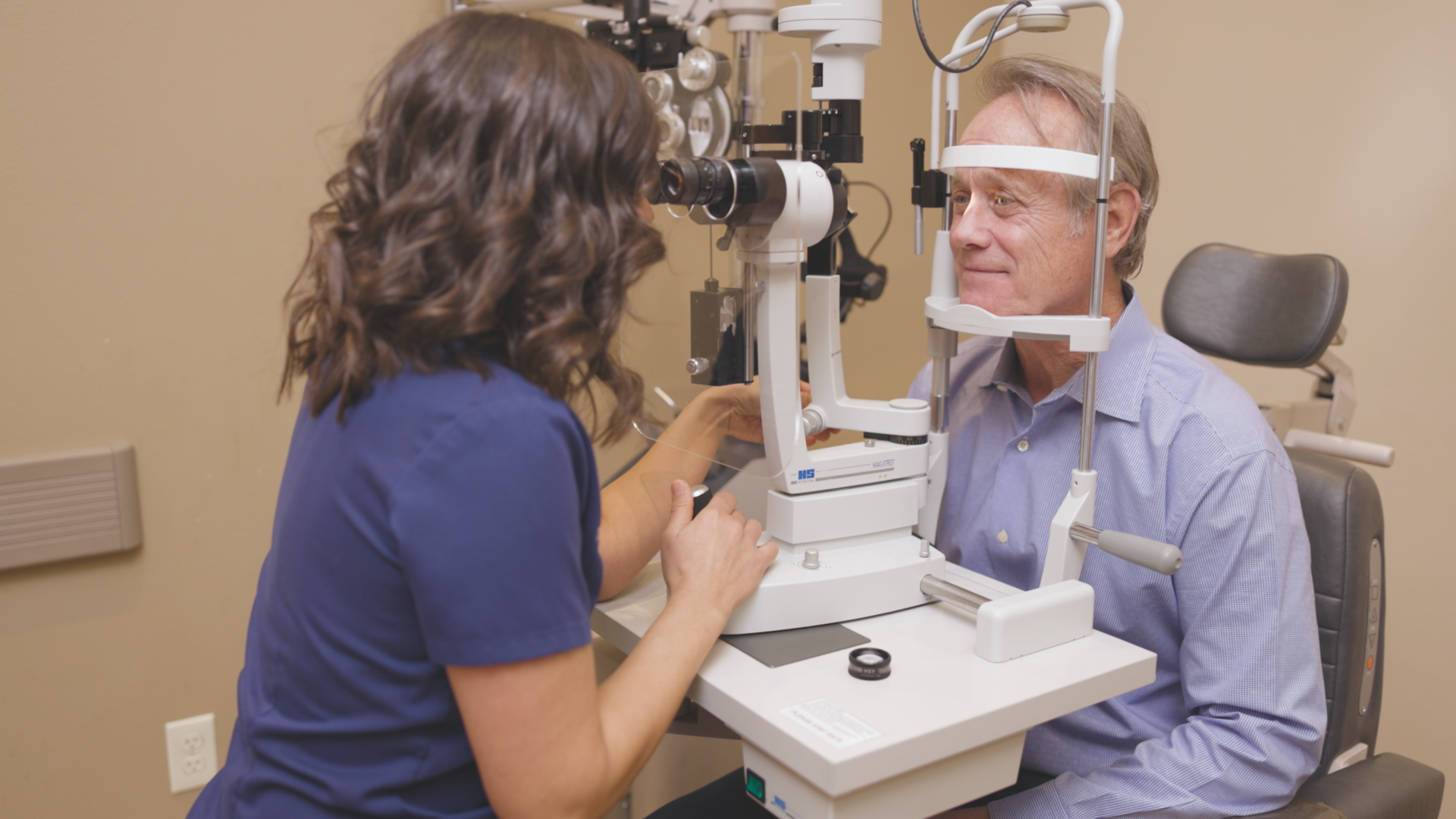Experience Personalized Care with Opticore Optometry in Chino
Experience Personalized Care with Opticore Optometry in Chino
Blog Article
Comprehending the Comprehensive Function of an Eye Doctor in Modern Eye Treatment
In the advancing landscape of medical care, the extent of an eye doctor's role has considerably expanded, prolonging well past the boundaries of standard vision improvement. With advancements in technology and an increasing focus on preventive treatment, optometrists are essential in identifying and handling persistent eye conditions, while also participating in very early condition discovery. Their experience in sophisticated diagnostic techniques such as optical comprehensibility tomography is invaluable. But just how do these responsibilities intersect with their duty in advertising general eye health, and what does this mean for patient end results in a collective health care environment?
Expanded Range of Practice
In recent times, the role of eye doctors has actually evolved dramatically, with many experts currently embracing an expanded range of technique that expands beyond standard eye examinations. This evolution shows the expanding acknowledgment of eye doctors as primary doctor in the area of eye treatment. Their responsibilities now encompass a wide variety of services, including prescribing medications for ocular conditions, handling persistent eye illness, and executing small procedures. This shift has been driven by developments in optometric education, improved scientific training, and the raising need for thorough eye treatment solutions, specifically in underserved locations.
Additionally, optometrists are now extra associated with collective care, working very closely with eye doctors, medical care medical professionals, and various other health care professionals to guarantee alternative individual care. This interprofessional collaboration is crucial in taking care of complicated situations that require a multidisciplinary strategy. In addition, optometrists are playing a pivotal function in public wellness efforts, such as vision screenings and eye health and wellness education, intended at improving area health outcomes.
The increased scope of technique for optometrists not only enhances their capability to provide detailed care however additionally addresses the expanding need for reliable and available eye treatment services, adding to overall medical care improvements.
Early Condition Detection
Very early detection of eye illness is increasingly becoming a focal factor in the increased role of eye doctors. As main eye treatment suppliers, eye doctors are uniquely positioned to identify very early indicators of ocular conditions such as glaucoma, macular degeneration, diabetic retinopathy, and cataracts. This essential role is critical, as early medical diagnosis can dramatically enhance the management and prognosis of these problems, possibly preventing vision loss and improving patient results.
Optometrists use extensive eye assessments to discover subtle adjustments in vision and eye wellness. The capability to recognize very early indications of systemic health and wellness issues, such as high blood pressure and diabetic issues, through eye indications even more underscores the relevance of routine eye exams.
Additionally, optometrists play a crucial function in client education and learning, highlighting the importance of regular eye examinations as part of general health upkeep. By fostering a positive approach to eye treatment, optometrists add considerably to public wellness, making sure diseases are caught and taken care of successfully before they can advance.
Advanced Diagnostic Strategies
Advanced analysis methods have actually revolutionized the practice of optometry, making it possible for practitioners to discover and keep an eye on ocular conditions with unprecedented accuracy. Technologies such as optical coherence tomography (OCT) supply high-resolution, cross-sectional pictures of the retina, promoting early discovery anonymous of problems like glaucoma and macular deterioration.
An additional essential advancement is digital retinal imaging, which captures comprehensive views of the retina using high-definition cams. This modern technology is critical in recognizing adjustments in retinal framework gradually, consequently helping in the management of conditions like diabetic retinopathy. Visual area screening, improved by computer-aided systems, permits exact mapping of an individual's area of vision, crucial in tracking and identifying glaucoma progression.
Corneal topography, one more significant diagnostic device, creates topographic maps of the cornea's surface. This is particularly beneficial in suitable contact lenses and planning refractive surgical procedure. These sophisticated diagnostic techniques collectively make it possible for optometrists to provide aggressive, targeted care, guaranteeing much better client end results and strengthening their pivotal duty in eye health and wellness monitoring.
Handling Persistent Eye Problems
Handling chronic eye problems is a foundation of optometric treatment that needs a comprehensive understanding of numerous ocular conditions and their long-term effects. Eye doctors play a pivotal role in surveillance, diagnosing, and managing problems such as glaucoma, diabetic person retinopathy, and age-related macular degeneration. These problems, if left neglected, can bring about significant aesthetic impairment or loss of sight, highlighting the crucial relevance of ongoing care and monitoring.
Optometrists use a series of diagnostic devices, consisting of optical coherence tomography (OCT), visual field screening, and fundus digital photography, to evaluate the progression of these persistent problems. By closely checking changes in eye health, optometrists can change therapy strategies to minimize condition development. This may involve prescribing medicines, suggesting way of living modifications, or coordinating with ophthalmologists for surgical treatments when needed.

Duty in Preventive Treatment
Preventive care is a fundamental aspect of optometry that concentrates on preserving eye health and preventing the start of ocular conditions. Optometrists play a vital role in very early detection and avoidance, utilizing routine eye examinations to recognize danger factors and refined changes in eye health and wellness. Optometrist Chino. These assessments are not just concerning vision correction yet include an extensive assessment of eye functions and frameworks, allowing the recognition of conditions such as glaucoma, check over here cataracts, and macular degeneration at a beginning
In enhancement to diagnostics, optometrists enlighten patients on way of living choices that advertise eye health, such as correct nourishment, UV security, and the value of normal eye check-ups. They suggest on the correct usage of electronic devices to avoid digital eye pressure, a growing problem in the digital age. Optometrists additionally provide assistance on safety glasses for entertainment and occupational activities, minimizing the risk of injury.
Precautionary eye treatment encompasses systemic health and wellness concerns that manifest in the eyes, such as diabetic issues and high blood pressure. By working together with various other medical care professionals, optometrists add to alternative individual treatment, stressing the interconnectedness of systemic and eye wellness. This aggressive approach is vital in securing aesthetic skill and total wellness.
Final Thought
Optometrists currently inhabit an essential duty in get redirected here modern-day eye treatment, defined by a broadened extent that consists of detecting and taking care of persistent eye problems, recommending medicines, and doing small procedures (Optometrist Chino). Their know-how in very early illness detection is boosted by innovative analysis methods such as optical coherence tomography and digital retinal imaging. By emphasizing preventative treatment and person education, eye doctors add substantially to overall eye wellness, collaborating with other medical care specialists to make sure reliable and extensive client outcomes

In addition to diagnostics, eye doctors educate individuals on lifestyle selections that promote eye wellness, such as proper nourishment, UV defense, and the significance of normal eye check-ups.Precautionary eye treatment expands to systemic health and wellness concerns that manifest in the eyes, such as diabetes and hypertension.Optometrists currently occupy a crucial function in modern-day eye care, identified by an increased scope that consists of detecting and taking care of chronic eye conditions, recommending drugs, and carrying out minor medical procedures.
Report this page